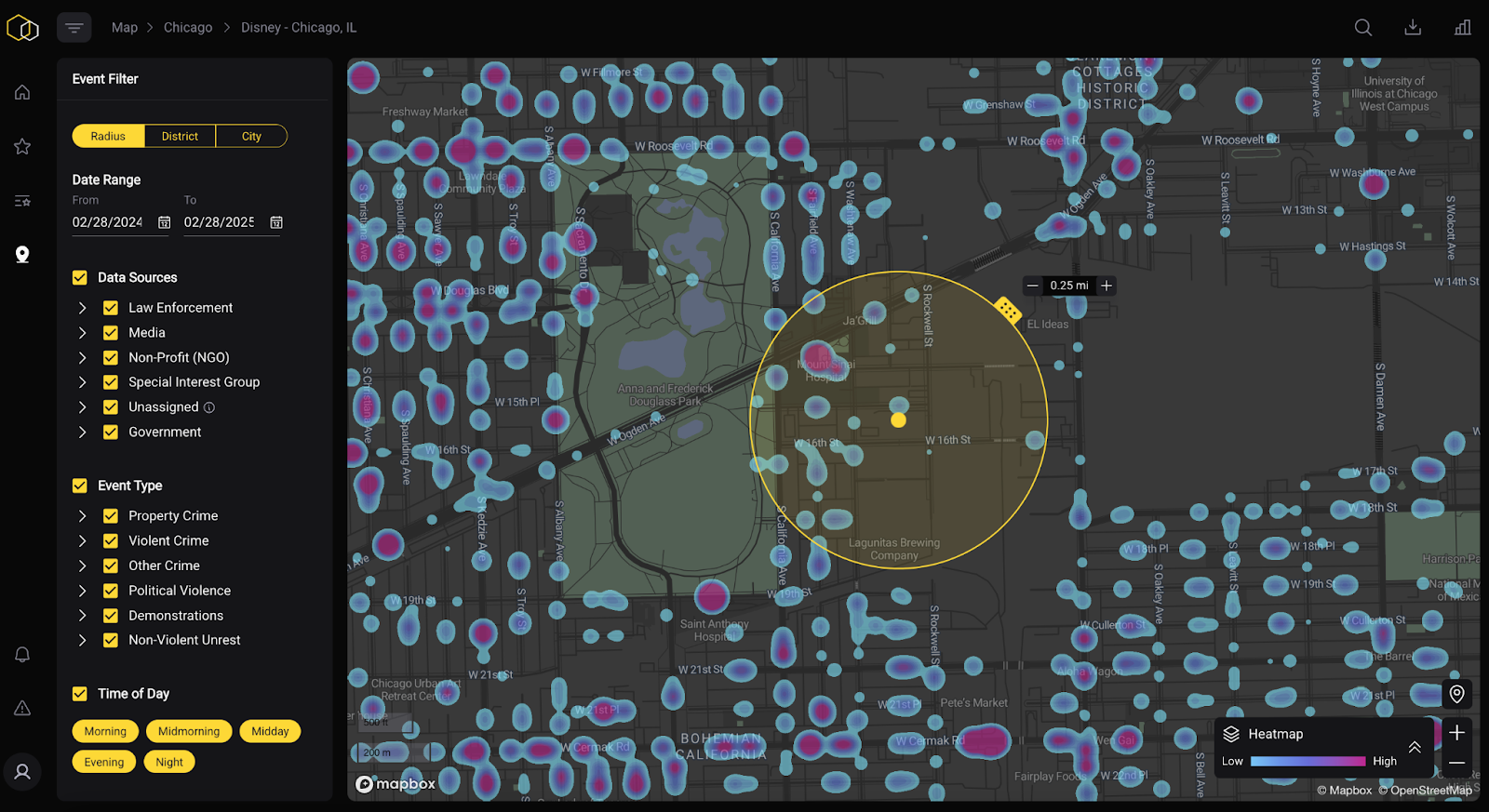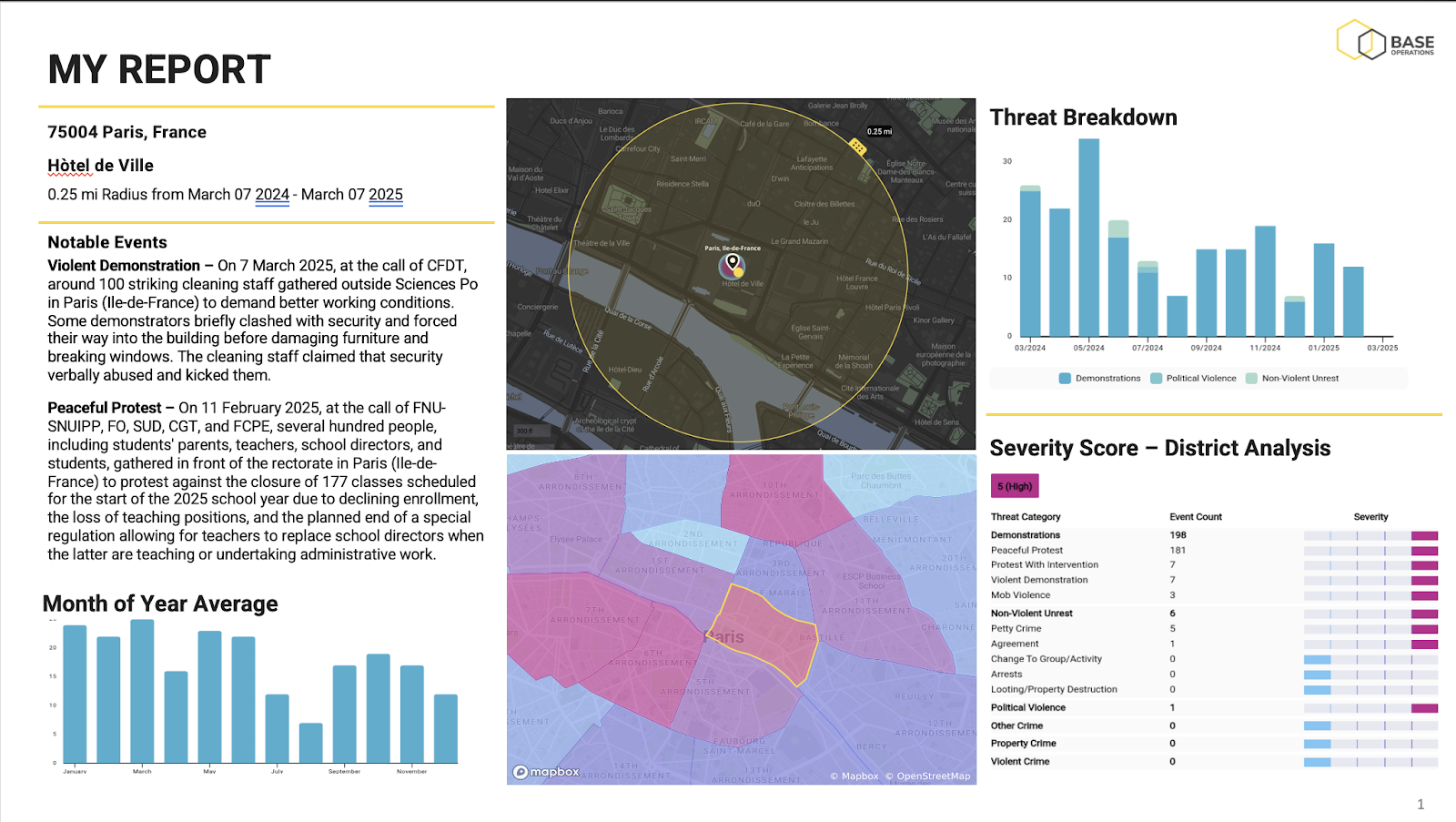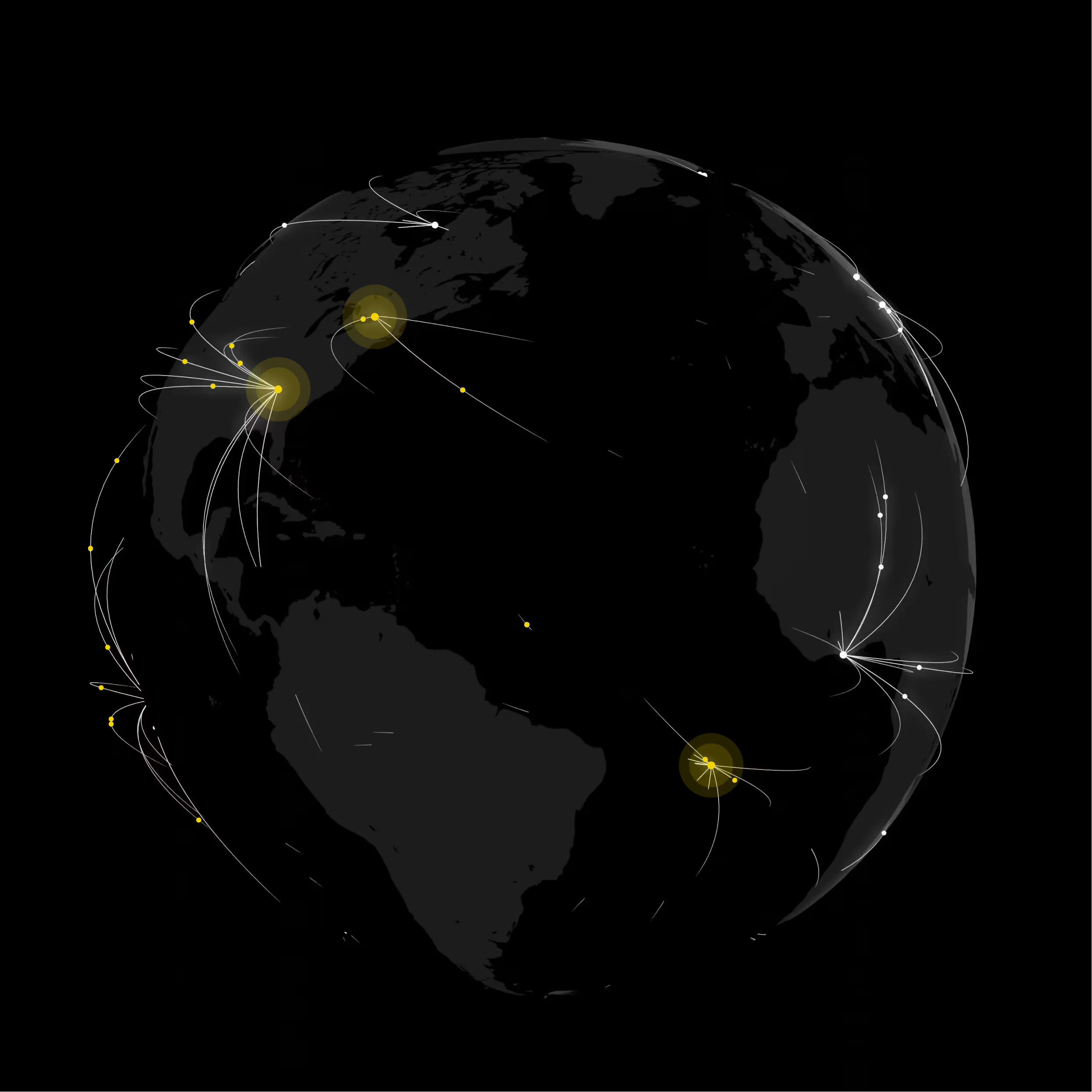6 Ways to Modernize Your Executive Protection Program
Executive protection requires both physical security measures and intelligent, data-driven insights. By adopting these modernized approaches, Global Security Directors can create more effective, proactive protection programs that safeguard executives across all environments they operate in.
In today's complex security landscape, protecting executives requires more than traditional approaches. Global Security Directors face unprecedented challenges in safeguarding leadership teams who are increasingly exposed to multi-dimensional threats. This article explores how data-driven intelligence and AI are improving executive protection strategies.
The Evolving Executive Threat Landscape
Today's corporate executives face a rapidly changing risk environment that extends far beyond traditional concerns like corporate espionage or threats from disgruntled employees. As Global Security Directors know, executive protection now encompasses:
Heightened Public Visibility: Executives serve as the public face of their company's values and policies, making them vulnerable to scrutiny and targeted threats.
Digital-to-Physical Threat Escalation: What begins as online harassment can quickly transform into physical security risks. As one Base Operations customer discovered, monitoring social media activity near an executive's Paris hotel during civil unrest allowed their security team to recommend postponing a personal trip, potentially preventing a dangerous situation.
Geopolitical Volatility: Political and social tensions have amplified scrutiny of corporate leaders, placing them at the center of blame for economic downturns and business decisions, with 86% of leaders believing a catastrophic cyberattack stemming from geopolitical tensions is likely within the next two years.
Constant Exposure: With the blurring line between personal and professional lives, security teams must now protect executives across multiple environments, not just the office—particularly critical since homes saw the highest rate of threats to high-profile individuals in 2024.
The reactive approach of deploying bodyguards or physical security without intelligence-driven context simply cannot address these evolving risks effectively.
Limitations of Traditional Executive Protection
While physical security personnel remain essential, relying solely on traditional measures creates significant security gaps:
Inherently Reactive: Traditional approaches focus on responding to immediate threats rather than anticipating and preventing risks.
Limited Intelligence Capabilities: Bodyguard teams often lack the tools to analyze crime patterns or predict emerging threats in unfamiliar locations.
Scalability Challenges: As executives travel globally, traditional protection struggles to scale across multiple locations and threat vectors.
Minimal Data Integration: Without data-driven insights, security teams make decisions based on limited information, potentially missing critical risk indicators.
According to a recent security industry survey, 85% of respondents reported an unprecedented increase in physical threats to executives, showing that traditional protection methods alone are no longer sufficient.
Six Ways to Modernize Your Executive Protection Program
1. Deploy AI-Driven Threat Intelligence for Proactive Security
Problem: Security Directors struggle to anticipate threats in unfamiliar locations when executives travel.
Solution: Implement AI-powered platforms that analyze real-time and historical crime data to predict emerging threats.
Action Steps:
Deploy street-level intelligence platforms that provide granular crime data around executive residences, offices, and travel destinations
Establish regular cadence for analyzing trend data and patterns in criminal activity
Create standardized risk reports that combine AI insights with human intelligence
Base Operations' street-level threat intelligence provides Security Directors with the capability to visualize crime patterns at a sub-mile radius, making it possible to identify significant safety variations even within seemingly safe neighborhoods where executives may stay during travel.

Visualize crime patterns at a sub-mile radius and filter by event type in Base Operations
2. Extend Protection Beyond Corporate Spaces
Problem: Executive security often focuses on the workplace, leaving gaps in protection during transit and at residences.
Solution: Implement a comprehensive security approach that covers all environments executives operate in.
Action Steps:
Conduct baseline risk assessments for executive residences using street-level crime data
Develop data-driven travel route planning using geospatial crime mapping
Implement regular monitoring of neighborhood crime trends around executive homes
Create location-specific executive protection protocols based on actual threat data
A Bay Area tech company used Base Operations to quickly assess threat levels near an executive's planned hotel during civil unrest in Paris, providing quantitative data that led to postponing the trip and potentially avoiding a dangerous situation.

Export threat assessment reports to make data-driven recommendations.
3. Integrate AI and Human Expertise for a Hybrid Security Model
Problem: Security teams operate in silos, with physical protection disconnected from intelligence operations.
Solution: Create a unified security approach that combines the strengths of both technology and human expertise.
Action Steps:
Train protection teams to integrate data insights into daily operations
Deploy mobile intelligence tools that allow security personnel to access threat data in the field
Establish clear communication protocols between intelligence analysts and protection teams
Develop standardized briefings that combine AI-driven insights with human context
This integration allows security teams to make data-driven decisions while still leveraging the human judgment and expertise necessary for high-stakes executive protection.
4. Leverage Geospatial Analytics for Risk-Based Decision Making
Problem: Security Directors struggle to quantify risk differences between locations when planning executive movements.
Solution: Use data visualization and geospatial mapping to compare threat levels across different locations.
Action Steps:
Implement a scoring system for comparing safety levels of different hotels, venues, and meeting locations
Use heat maps to identify high-risk areas around planned executive destinations
Create time-of-day risk profiles to determine optimal scheduling for executive movements
Develop standard operating procedures for different risk score thresholds
With Base Operations, security teams can quickly see their location BaseScore™ on a 0-100 scale, enabling easy comparison of potential venues or travel destinations to identify the safest options.

Compare risk at a glance with BaseScore cells for the Philadelphia metropolitan area.
5. Implement Digital Risk Monitoring Within Your Security Program
Problem: Online threats can escalate to physical security incidents without warning.
Solution: Integrate digital and physical security monitoring to create a comprehensive view of the threat landscape.
Action Steps:
Establish monitoring for executive mentions on social media and message boards
Create escalation protocols when online activity suggests potential physical threats
Train security teams to recognize digital indicators that may precede physical incidents
Develop response playbooks for when digital threats require physical security adjustments
By monitoring both physical and digital threat indicators, security teams can identify risks before they materialize and adjust protection strategies accordingly—a critical capability given that 75% of executives have already experienced credential exposure.

Monitor how risk evolves across locations using BaseScore.
6. Implement a Continuous, Adaptive Security Strategy
Problem: Static security assessments quickly become outdated as threat landscapes evolve.
Solution: Adopt a dynamic, continuous evaluation model that adjusts to emerging threats.
Action Steps:
Establish monthly reviews of threat trends in key executive locations
Create automated alerts when risk scores change significantly in monitored areas
Develop flexible protection protocols that can scale up or down based on current threat levels
Implement regular tabletop exercises to test response to emerging threat scenarios
Base Operations provides monthly data updates across its platform, ensuring security teams always have access to the most current risk information for executive protection planning.
The Future of Executive Protection
The integration of AI-powered threat intelligence into executive protection programs transforms security from a reactive function to a strategic advantage. Data-driven insights enable Security Directors to:
Communicate risk assessments more effectively to executives using visual, quantitative data
Build greater trust with executive teams through informed, proactive security recommendations
Make more confident security decisions backed by comprehensive intelligence
Allocate protection resources more efficiently based on actual risk levels
As one customer noted, "Our executives are really interested in data-driven solutions... Base Operations helped us show the hard data that changed a personal travel decision."
In today's volatile world, executive protection requires both physical security measures and intelligent, data-driven insights. By adopting these modernized approaches, Global Security Directors can create more effective, proactive protection programs that safeguard executives across all environments they operate in.
The evolution of executive threats demands an evolution in protection strategies—where AI-powered security isn't just an advantage, it's a necessity for protecting corporate leaders and ensuring organizational stability.
Takeaways

Join 1100+ security leaders getting new ideas on how to better protect their people and assets.







